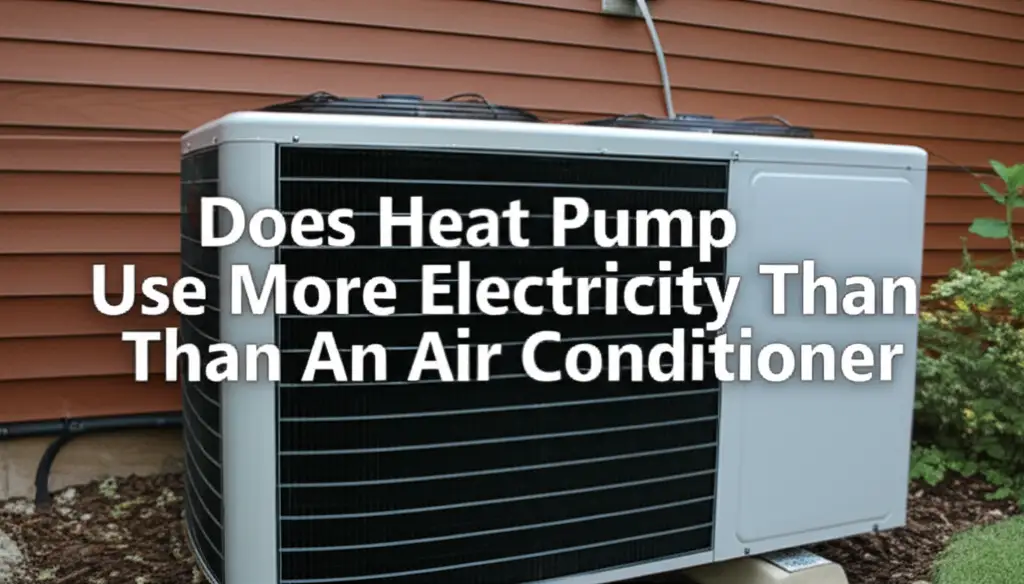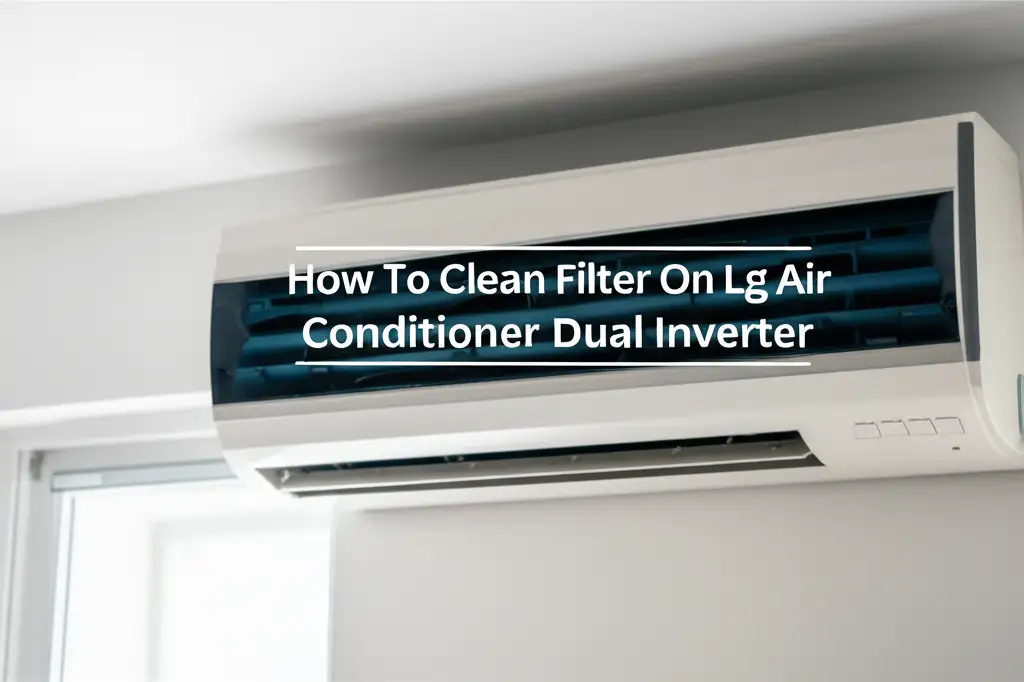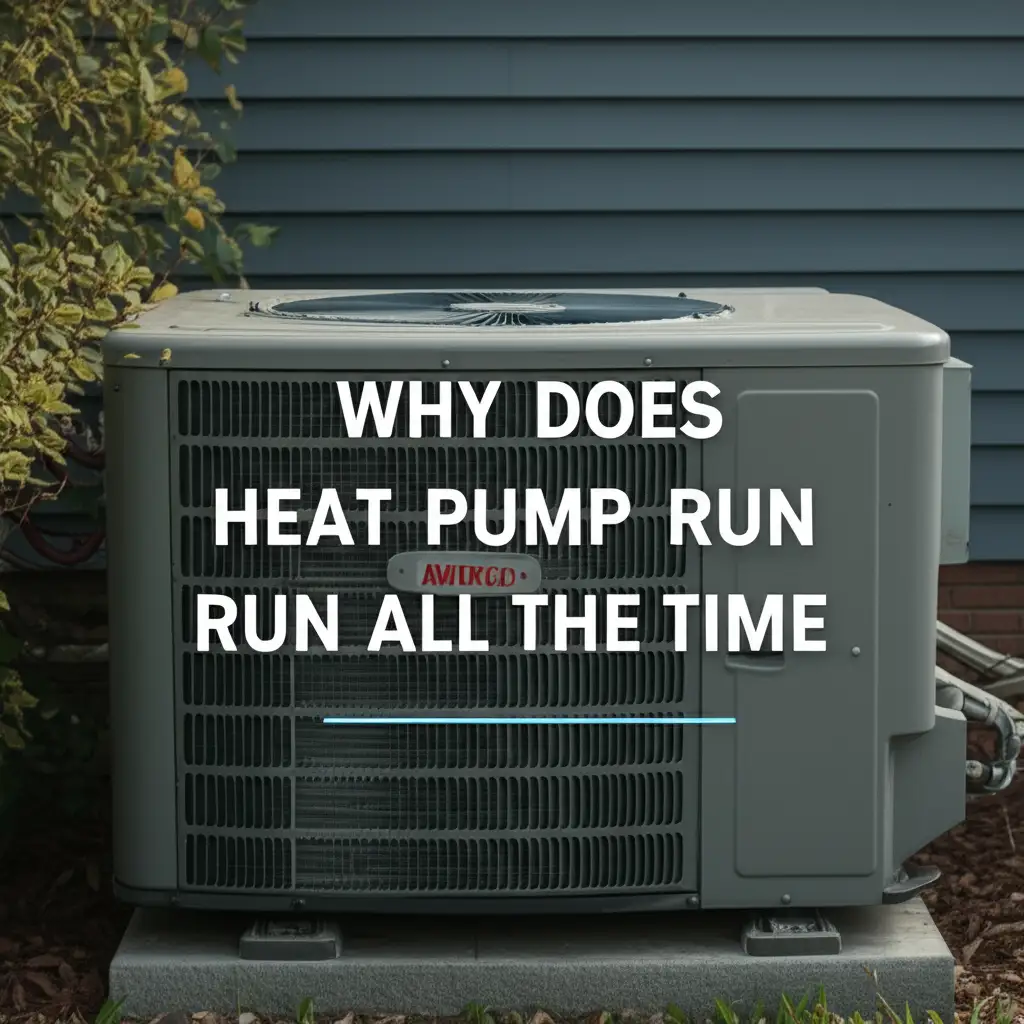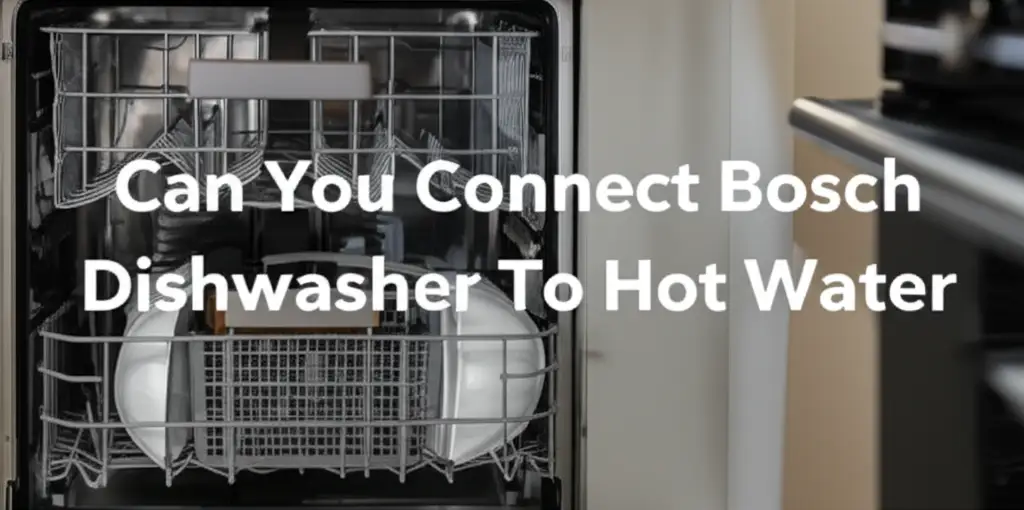· Todd Martin · Home HVAC & Energy Efficiency · 18 min read
Does Heat Pump Use More Electricity Than An Air Conditioner

Does a Heat Pump Use More Electricity Than an Air Conditioner?
Many homeowners wonder about their energy bills. One common question I hear is, “Does a heat pump use more electricity than an air conditioner?” This is an important question for anyone looking to manage home energy costs. Understanding how these systems work can save you money. I want to help you clarify this topic and make informed decisions. We will explore the differences in their operation and energy use in both heating and cooling modes.
Takeaway:
- Heat pumps are generally more energy-efficient than traditional ACs for heating.
- In cooling mode, heat pumps and ACs use similar amounts of electricity.
- Factors like climate, insulation, and maintenance greatly influence energy usage for both systems.
- Auxiliary heat in heat pumps can increase electricity consumption in very cold weather.
- Regular maintenance helps both systems operate at peak efficiency.
A heat pump generally uses less electricity than an air conditioner for heating because it moves heat rather than generating it. In cooling mode, a heat pump operates much like a standard air conditioner, resulting in similar electricity consumption.
Understanding Heat Pumps and Air Conditioners
Let us start by understanding what each system does. Both heat pumps and air conditioners are essential for home comfort. They both share similar components and functions, especially when cooling your home. Knowing their basic operation helps clarify their electricity use.
An air conditioner cools your home. It pulls heat from inside your house. Then, it releases that heat outside. An air conditioner works on the principle of heat transfer. It uses a refrigerant cycle to absorb heat and move it away.
A heat pump cools your home in the same way. It also extracts heat from indoors and moves it outside. However, a heat pump can do more than just cool. It can reverse its operation. This allows it to absorb heat from outside and move it inside your home for heating. This dual functionality makes heat pumps versatile.
Both systems use electricity to power a compressor and fans. The compressor circulates the refrigerant. Fans move air over coils. This process facilitates heat exchange. Understanding these basics is crucial to comparing their energy needs.
The Core Difference: How They Move Heat
The fundamental difference lies in their primary purpose and capability. An air conditioner is a one-way device. It only moves heat from inside to outside. It is designed solely for cooling your space. When winter comes, you need a separate heating system. This usually means a furnace that burns fuel.
A heat pump offers two-way heat transfer. It moves heat outside for cooling in summer. It also moves heat inside for heating in winter. This dual capability makes it highly efficient. It does not generate heat; it simply moves it. This is a key reason for its efficiency. Moving heat is less energy-intensive than creating it.
Imagine moving water versus boiling water. Moving water requires less energy. This is similar to how a heat pump works. It gathers existing heat, even from cold air. It then transfers this heat to your home. This process is called heat exchange. This operational difference impacts electricity consumption significantly. It particularly affects heating costs.
Traditional furnaces use resistance heating or burn fossil fuels. Resistance heating is 100% efficient at converting electricity to heat. However, it uses a lot of electricity. A heat pump can deliver multiple units of heat energy for every unit of electrical energy consumed. This makes heat pumps very appealing for year-round comfort.
Electricity Consumption: A Direct Comparison in Cooling Mode
When we look at cooling, heat pumps and air conditioners perform similarly. They both work by extracting heat from your indoor air. Then, they transfer this heat to the outdoor environment. Their components are largely identical for this function. This means their electricity consumption for cooling is often comparable.
Both systems use the same metrics for cooling efficiency. These metrics include SEER (Seasonal Energy Efficiency Ratio) and SEER2. A higher SEER or SEER2 rating means the unit is more efficient. It uses less electricity to provide the same amount of cooling. Modern air conditioners and heat pumps come with high SEER ratings. This means they are designed for optimal energy use.
So, if you have two units with the same SEER rating, their electricity usage for cooling will be very close. The choice between a heat pump and an air conditioner might not save you much electricity in cooling alone. Consider the overall benefits. The main advantage of a heat pump surfaces when we consider heating. It provides heating without needing a separate furnace.
Regular maintenance greatly influences cooling efficiency. Dirty coils or clogged filters make units work harder. This increases electricity usage. I always recommend checking your filters monthly. You should also schedule annual professional tune-ups for both types of systems. Proper care helps maintain their stated efficiency levels. For tips on keeping your cooling system running well, learn how to clean an air conditioner or how to clean heat pump coils.
Heating Efficiency: Where Heat Pumps Shine (or Struggle)
Heating is where heat pumps truly differentiate themselves from traditional systems. Instead of burning fuel or using electric resistance, a heat pump moves existing heat. This is far more efficient. It can extract heat from outdoor air even when temperatures drop below freezing. This method of heat transfer makes heat pumps incredibly energy-efficient for heating.
The efficiency of a heat pump in heating mode is measured by its HSPF (Heating Seasonal Performance Factor). A higher HSPF means greater heating efficiency. For example, a heat pump with an HSPF of 10 provides 10 units of heat for every unit of electricity it consumes. This is a major improvement over electric resistance heaters, which only provide one unit of heat per unit of electricity. This efficiency directly translates to lower electricity bills for heating.
However, heat pumps can face challenges in extremely cold climates. As outdoor temperatures drop, there is less heat available to extract. The heat pump must work harder. Its efficiency can decrease. At very low temperatures, a heat pump might struggle to provide enough heat for your home. This is when auxiliary or supplemental heating often kicks in.
Auxiliary heat typically uses electric resistance coils. These coils are similar to those in a toaster. They convert electricity directly into heat. While effective, electric resistance heating consumes a lot of electricity. This can significantly increase your utility bills during cold snaps. So, while a heat pump is generally more efficient, its electricity use can spike when auxiliary heat is active. It is good to know does heat pump shut off when auxiliary heat is on.
Understanding when and how often your heat pump uses auxiliary heat is important. This helps explain why is my air source heat pump costing so much. Properly sized and installed heat pumps are better at handling colder temperatures without excessive auxiliary heat use.
Factors Influencing Electricity Use for Both Systems
Many variables affect how much electricity your HVAC system uses. It is not just about the type of unit. Your home’s characteristics and your usage habits play a big role. Understanding these factors helps you manage your energy consumption better.
Firstly, your home’s insulation levels matter. A well-insulated home loses less heat in winter and gains less heat in summer. This reduces the workload on your heating and cooling systems. Poor insulation means your system must run longer and harder. This leads to higher electricity bills. Consider adding insulation to your attic or walls.
Window quality also impacts energy use. Drafty or single-pane windows allow significant heat transfer. Upgrading to energy-efficient windows can make a noticeable difference. Sealing air leaks around windows and doors also helps. This prevents conditioned air from escaping.
Your local climate is another crucial factor. In mild climates, heat pumps are exceptionally efficient year-round. They rarely need auxiliary heat. In colder regions, heat pumps still offer substantial savings over electric furnaces. However, they will use more electricity when auxiliary heat is engaged. Knowing how an air source heat pump works in cold weather can help set expectations.
The size of your HVAC unit is important. An oversized unit cycles on and off too frequently. This wastes energy and reduces comfort. An undersized unit runs constantly, struggling to maintain the desired temperature. This also consumes excess electricity. A professional HVAC contractor can help you select the right size.
Lastly, your personal thermostat settings influence energy use. Keeping your home at extreme temperatures requires more energy. Adjusting your thermostat by a few degrees can save a lot. Using a programmable or smart thermostat helps optimize settings. This allows you to reduce energy use when you are away or asleep.
Real-World Electricity Bills: Heat Pumps vs. AC
Let’s talk about the practical impact on your electricity bills. Comparing real-world bills can be complex. Many variables affect them. However, we can look at general trends. Homeowners often report significant savings with heat pumps. This is especially true when switching from electric resistance heating or fossil fuel furnaces.
For cooling, as mentioned, electricity usage is often similar. A heat pump and a conventional AC with similar SEER ratings will consume comparable electricity. Your summer cooling bills might not change dramatically. The real difference appears during the heating season. This is where heat pumps shine.
Consider a home previously heated by an electric furnace. An electric furnace uses one unit of electricity to produce one unit of heat. A heat pump, even in colder weather, can produce two or three units of heat for one unit of electricity. This higher efficiency directly translates to lower heating bills. This means you will use less electricity overall for heating. This can lead to substantial annual savings.
If your previous heating system used natural gas or oil, the comparison is different. Gas and oil prices fluctuate. They can sometimes be cheaper than electricity. However, heat pumps are generally more energy-efficient than even high-efficiency furnaces. You should compare your local fuel prices and electricity rates. This helps determine the potential savings.
Unexpectedly high electricity bills can occur. This often happens if your heat pump is frequently using auxiliary heat. This might be due to very cold outdoor temperatures. It could also be due to an improperly sized unit or poor insulation. If you notice a sudden jump, you might ask is the new heat pump in your house also pumping up your electricity bills. Understanding how many kWh does an air source heat pump use helps track consumption. Monitoring your electricity usage over time can highlight any anomalies.
Maximizing Energy Savings with Your HVAC System
You can do several things to reduce electricity consumption for both heat pumps and air conditioners. These actions help your system run more efficiently. This saves you money on your utility bills. I want you to feel confident in managing your home’s energy.
First, regular maintenance is paramount. Schedule professional tune-ups annually. A technician can clean coils, check refrigerant levels, and ensure all components work correctly. This keeps your system running at peak efficiency. Neglecting maintenance can significantly increase electricity use over time. For an air source heat pump, it is important to know how often an air source heat pump should be serviced.
Secondly, replace your air filters regularly. Dirty filters restrict airflow. This forces your system to work harder. It uses more electricity. I suggest checking filters monthly. Replace them every 1-3 months, depending on usage and household conditions. This simple step makes a big difference.
Thirdly, optimize your thermostat settings. Set your thermostat to a comfortable but energy-efficient temperature. During summer, set it higher when you are away. In winter, set it lower. A smart thermostat can automate these adjustments. It learns your schedule and optimizes temperatures. This reduces wasted energy.
Fourth, improve your home’s envelope. Seal air leaks around windows, doors, and utility penetrations. Add weatherstripping and caulk. Improve insulation in your attic, walls, and crawl spaces. These improvements prevent conditioned air from escaping. They reduce the workload on your HVAC system.
Finally, consider the age of your system. Older units are typically less efficient. They use more electricity to provide the same comfort. If your system is over 10-15 years old, consider upgrading. Newer heat pumps and air conditioners boast much higher SEER and HSPF ratings. They offer significant long-term savings. While there is an upfront cost, new systems can quickly pay for themselves in energy savings.
Understanding Key Efficiency Ratings: SEER, HSPF, and COP
When evaluating HVAC systems, you often hear terms like SEER, HSPF, and COP. Understanding these ratings is vital. They tell you how efficiently a system converts electricity into heating or cooling. I find these ratings extremely helpful for making smart choices.
SEER (Seasonal Energy Efficiency Ratio) measures cooling efficiency. It applies to both air conditioners and heat pumps. SEER tells you how much cooling an air conditioner provides per unit of electricity consumed over a typical cooling season. A higher SEER rating means greater efficiency. For instance, a SEER 18 unit is more efficient than a SEER 14 unit. It will use less electricity for the same cooling output. Current minimum SEER2 ratings are typically around 13.8 or 14. This encourages manufacturers to produce more efficient units.
HSPF (Heating Seasonal Performance Factor) measures heating efficiency for heat pumps. Just like SEER, a higher HSPF indicates better heating efficiency. It calculates the total heating output over a typical heating season divided by the total electricity consumed. For example, an HSPF of 10 means the heat pump delivers 10 units of heat for every unit of electricity. This is a significant improvement over traditional electric resistance heating, which has an effective HSPF of 3.41 (COP of 1).
COP (Coefficient of Performance) is another measure of efficiency, often used for heat pumps. It’s a snapshot of how efficient the heat pump is at a specific temperature. COP represents the ratio of heating or cooling output to electricity input. A COP of 3 means the heat pump produces three units of heat for one unit of electricity. COP is usually tested at specific outdoor temperatures. It helps engineers and designers assess performance. Both HSPF and COP demonstrate a heat pump’s superior efficiency in moving heat compared to generating it.
These ratings help you compare different models. They guide you toward the most energy-efficient choice. Investing in a higher-rated system often means lower monthly electricity bills. It is a smart long-term investment. Always check these ratings when considering a new unit.
The Role of Climate and Installation Quality
The effectiveness and electricity consumption of a heat pump largely depend on two critical factors: the climate you live in and the quality of the installation. These elements can significantly alter your real-world energy use, regardless of the unit’s advertised efficiency.
Climate Impact: As I mentioned earlier, heat pumps are most efficient in moderate climates. Here, temperatures rarely drop to extremes. The heat pump can extract enough heat from the outdoor air without relying heavily on auxiliary heating. In such conditions, a heat pump consistently outperforms traditional electric resistance heating in terms of energy consumption for heating. Your electricity bills will reflect this significant saving.
However, in very cold climates, where winter temperatures frequently fall below freezing (e.g., below 20°F or -6°C), a standard air-source heat pump’s efficiency decreases. It may need to use its auxiliary electric resistance coils more often. When auxiliary heat engages, it consumes a large amount of electricity. This can push your electricity bills higher during the coldest months. Newer “cold climate” heat pumps are designed to operate efficiently at much lower temperatures. They minimize reliance on auxiliary heat. When considering a heat pump, always assess if it is suitable for your specific climate zone.
Installation Quality: Even the most efficient heat pump will not perform optimally if installed poorly. A proper installation is critical for energy efficiency and longevity. I have seen many cases where a faulty installation led to higher electricity bills. An improperly sized unit, for example, either runs too long or cycles too frequently. Both scenarios waste energy.
Refrigerant levels must be precise. Incorrect refrigerant charge leads to reduced efficiency and increased electricity consumption. Leaks in ductwork can cause significant energy loss. If heated or cooled air escapes into unconditioned spaces like attics or crawl spaces, your system works harder to compensate. This directly impacts your electricity usage.
Choosing a certified and experienced HVAC professional for installation is crucial. They ensure the unit is correctly sized. They also confirm that refrigerant levels are accurate. Finally, they verify that ductwork is sealed and insulated. A high-quality installation ensures your heat pump or AC operates as efficiently as its ratings suggest. This ultimately protects your investment and keeps your electricity bills in check.
Maintenance and Lifespan: Ensuring Long-Term Efficiency
Proper maintenance is not just about keeping your system running. It is about keeping it running efficiently. Regular care directly impacts your electricity bills over the system’s lifespan. Both heat pumps and air conditioners benefit immensely from routine upkeep.
Just like a car, your HVAC system needs regular check-ups. Dust and debris can accumulate on coils. This prevents efficient heat transfer. Dirty coils force the compressor to work harder. This increases electricity consumption. Clogged air filters restrict airflow. This also makes the fan motor work harder and use more electricity. I always emphasize cleaning or replacing filters monthly. This simple task is one of the most effective ways to maintain efficiency.
Professional annual maintenance is also essential. A certified technician will check refrigerant levels. They will inspect electrical connections. They will also clean outdoor and indoor coils thoroughly. They can identify small issues before they become major problems. For example, a low refrigerant charge can make your system run inefficiently. It uses more electricity to provide less heating or cooling. Addressing this quickly saves energy and extends the system’s life.
The lifespan of a heat pump or air conditioner is typically 10 to 15 years, sometimes longer with excellent maintenance. As systems age, their components naturally degrade. They become less efficient. An older unit might use significantly more electricity than a new, high-efficiency model. Even with perfect maintenance, an old system might eventually cost more to operate than to replace.
When considering the long-term energy use, factor in the expected lifespan and maintenance needs. A well-maintained heat pump or AC will provide consistent comfort. It will also maintain its efficiency closer to its original ratings. This helps keep your electricity bills predictable and manageable for many years. Neglecting maintenance, however, can drastically reduce efficiency. This leads to higher electricity bills and a shorter lifespan for your unit.
FAQ Section
Q1: Do heat pumps always save electricity compared to traditional ACs? A: Heat pumps typically save electricity when heating, as they are more efficient than electric resistance heating. In cooling mode, their electricity consumption is similar to a conventional air conditioner with the same efficiency rating. Overall savings depend heavily on climate, home insulation, and the type of heating system being replaced.
Q2: Why do heat pumps sometimes use a lot of electricity in winter? A: In very cold weather, a heat pump might struggle to extract enough heat from the outdoor air. This causes its auxiliary heating (electric resistance coils) to engage. Auxiliary heat consumes significantly more electricity, leading to higher bills during severe cold snaps. Newer cold-climate models reduce this reliance.
Q3: How can I tell if my heat pump is running efficiently? A: Look for consistent indoor temperatures and comfortable humidity levels without the system running constantly. Check your electricity bills for sudden spikes that are not tied to extreme weather. Regular professional maintenance and keeping air filters clean are strong indicators of good efficiency.
Q4: Is it cheaper to run a heat pump or a gas furnace for heating? A: The cost comparison depends on local electricity and natural gas prices, as well as the efficiency of both systems. Heat pumps are generally more energy-efficient, meaning they convert more energy into heat. However, if gas prices are very low and electricity prices are high, a gas furnace might be cheaper to operate in some areas.
Q5: Can I reduce my heat pump’s electricity usage? A: Yes, you can. Regular maintenance, including cleaning coils and changing filters, helps. Optimizing thermostat settings, sealing air leaks in your home, and improving insulation also significantly reduce electricity consumption. Consider upgrading to a smart thermostat for automated savings.
Q6: What is the main benefit of a heat pump over an air conditioner? A: The main benefit is dual functionality. A heat pump provides both efficient cooling and highly efficient heating using the same unit. This eliminates the need for a separate furnace, simplifying your HVAC system and often leading to overall lower energy costs throughout the year, especially for heating.
Conclusion
So, does a heat pump use more electricity than an air conditioner? In cooling mode, their electricity consumption is largely comparable, especially for units with similar efficiency ratings. However, for heating, a heat pump generally uses significantly less electricity than a traditional electric furnace. This is because it moves heat rather than generating it. This fundamental difference makes heat pumps a highly energy-efficient choice for year-round comfort.
The real-world electricity usage for both heat pumps and air conditioners depends on many factors. Your home’s insulation, window quality, and ductwork sealing all play a big part. Your local climate and how you set your thermostat also influence consumption. Remember, an improperly sized unit or poor installation can lead to higher bills regardless of the system type.
I encourage you to consider all these aspects when evaluating your home’s HVAC needs. Regular maintenance, smart thermostat use, and home envelope improvements are crucial steps. These actions maximize the energy efficiency of your heat pump or air conditioner.
If you are looking to manage your long-term energy costs and ensure comfortable temperatures year-round, a heat pump often presents a compelling solution. Understanding its operation empowers you to make wise energy choices for your home.
- Heat Pump Electricity
- Air Conditioner Usage
- Energy Efficiency
- HVAC Comparison
- Home Heating Costs
- Cooling Bills





